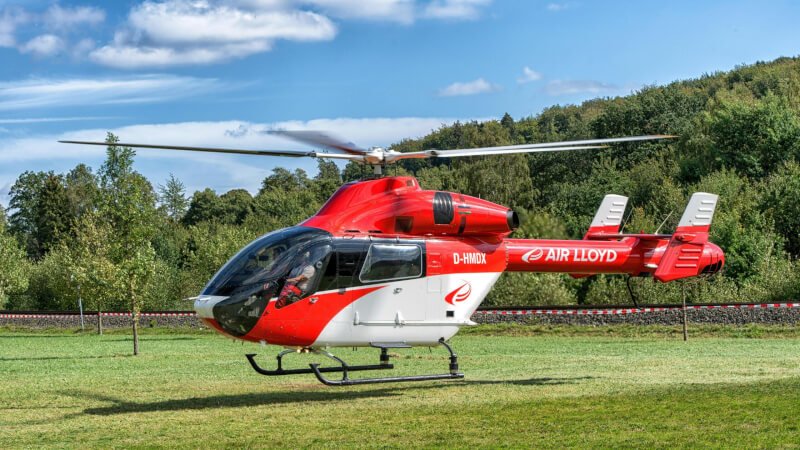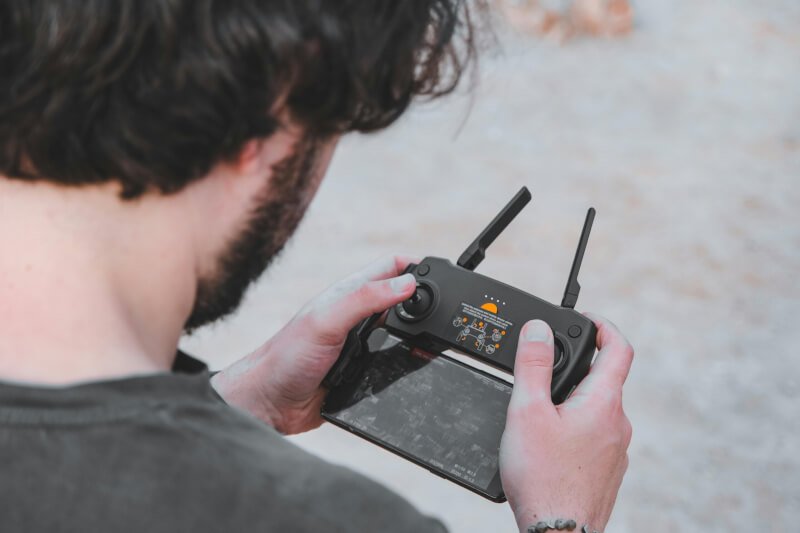In this article, you will discover useful tips to troubleshoot the common issues that may arise with your RC Heli. Whether you’re a beginner or a seasoned flyer, it’s no secret that these miniature aircraft can sometimes encounter problems. From unresponsive controls to issues with battery life, this guide will provide you with easy-to-follow steps to get your RC Heli up and running smoothly again. So, if you’re ready to take your flying experience to new heights, let’s dive into the world of RC Heli troubleshooting together!
Troubleshooting Common Issues With Your RC Heli
If you’re having trouble with your remote control helicopter (RC heli), don’t worry! Many common issues can be easily resolved with a bit of troubleshooting. In this article, we’ll guide you through the steps to diagnose and fix some of the most common problems that RC heli enthusiasts encounter. So let’s get started and get you back in the air!
1. Heli Not Turning On
Check battery connection
The first thing to check when your RC heli fails to turn on is the battery connection. Ensure that the battery is securely connected to your heli and that there are no loose or damaged wires. Sometimes, a loose connection can prevent your heli from receiving power.
Inspect power switch
If the battery connection is secure and your RC heli still won’t turn on, inspect the power switch next. Make sure the switch is in the proper position and functioning correctly. A faulty power switch can be the reason behind the unresponsive behavior of your heli.
Check for damaged wiring
Damaged wiring can also prevent your RC heli from turning on. Carefully inspect the wiring for any signs of fraying, cutting, or loose connections. If you notice any damage, it’s important to replace or repair the affected wiring to restore proper functionality to your heli.
Test battery voltage
If all the previous checks are in order and your heli still refuses to turn on, it’s time to test the battery voltage. Using a multimeter, measure the voltage of the battery. If the voltage is too low, it may indicate that the battery needs to be recharged or replaced.
Replace battery if necessary
If the battery voltage is below the recommended level or if it no longer holds a charge, it’s time to replace it. Invest in a high-quality battery that is compatible with your RC heli to ensure optimal performance.

2. Unresponsive Controls
Check transmitter batteries
When your RC heli’s controls become unresponsive, the first thing to check is the batteries in the transmitter. Make sure they are fresh and properly inserted. Weak or faulty transmitter batteries can result in unreliable signal transmission and unresponsive controls.
Verify proper transmitter and heli pairing
Ensure that your transmitter is correctly paired with your RC heli. Sometimes, a mismatch can occur, leading to unresponsive controls. Consult your heli’s manual to understand the pairing procedure and follow it carefully to establish a proper connection.
Inspect control linkages
If the transmitter and heli are correctly paired, but the controls are still unresponsive, inspect the control linkages. These are the mechanical connections between the control surfaces and the servo motors. Look for any signs of damage or disconnection and adjust or replace them as necessary.
Calibrate remote control
If all the physical components appear to be in order, you may need to calibrate your remote control. This process ensures that the control inputs from the transmitter are properly interpreted by your RC heli. Consult your heli’s manual for instructions on how to calibrate the remote control, as the procedure may vary depending on the model.
3. Heli Not Hovering or Losing Altitude
Inspect rotor blades for damage or imbalance
If your RC heli is not hovering properly or losing altitude unexpectedly, the rotor blades may be the culprit. Check the blades for any signs of damage, such as cracks or bends. Additionally, ensure that the blades are balanced correctly, as an imbalance can affect the stability of your heli.
Check rotor head assembly for tightness
Loose rotor head assembly can lead to unstable flight and difficulty in maintaining altitude. Inspect the rotor head assembly and tighten any loose screws or fasteners. It’s crucial to ensure that all components in the rotor head assembly are securely in place.
Adjust pitch and throttle settings
If your RC heli is struggling to maintain altitude, you may need to adjust the pitch and throttle settings. These settings determine the angle of the rotor blades and the power delivered to the motor. Refer to your heli’s manual for guidance on adjusting these settings to achieve stable flight.
Ensure gyro is properly calibrated
A misaligned or improperly calibrated gyro can also cause your RC heli to lose altitude or exhibit unstable flight characteristics. Check the gyro’s calibration according to the manufacturer’s instructions and make any necessary adjustments. Calibrating the gyro ensures that it accurately detects and compensates for changes in your heli’s orientation.

4. Drifting or Unsteady Flight
Check for weight imbalance
If your RC heli drifts or exhibits unsteady flight, it may be due to a weight imbalance. Make sure that all components, such as the battery and any added accessories, are properly balanced. Even a slight imbalance can significantly impact your heli’s flight stability.
Inspect and adjust trim settings
Trim settings help fine-tune the control surfaces to maintain straight flight. If your RC heli tends to drift to one side, you may need to adjust the trim settings. Experiment with small adjustments and observe the effect on your heli’s flight until you achieve a balanced and steady flight.
Verify proper center of gravity
An incorrect center of gravity can cause your RC heli to exhibit unstable flight behavior. Consult your heli’s manual to determine the recommended center of gravity position and ensure that your heli is balanced accordingly. Adjust the placement of accessories or the battery if necessary to achieve the correct center of gravity.
Calibrate gyro if necessary
A poorly calibrated gyro can contribute to drift or unsteady flight. Following the manufacturer’s instructions, calibrate the gyro to ensure that it accurately detects and compensates for any changes in your heli’s orientation. This calibration will help improve the stability and responsiveness of your RC heli during flight.
5. Motor or ESC Issues
Inspect motor and ESC for damage
If your RC heli experiences issues with the motor or electronic speed controller (ESC), begin by inspecting both components for any visible damage. Look for signs of overheating, burnt wires, or any physical abnormalities. Damaged motors or ESCs may require replacement to restore proper functionality.
Check motor and ESC connections
Loose or faulty connections can also lead to motor or ESC issues. Ensure that all connections between the motor, ESC, and battery are secure and free from damage. Additionally, check for any loose or disconnected wires and reattach or repair them as needed.
Test motor performance on a different power source
To isolate motor or ESC issues, you can test the motor’s performance using a different power source. Connect the motor to a known working ESC or battery and observe its behavior. If it performs correctly, the issue may lie with your original ESC or battery, and replacing them may be necessary.
Replace motor or ESC if necessary
If the motor or ESC continues to exhibit issues after thorough inspection and testing, it may be time for a replacement. Consult the manufacturer’s recommendations or reach out to an RC heli specialist to ensure compatibility and select a suitable motor or ESC option for your specific heli model.

6. Unreliable Radio Range
Check transmitter and receiver antenna
When you experience unreliable radio range with your RC heli, start by inspecting both the transmitter and receiver antennas. Ensure that they are undamaged and properly extended to maximize signal reception. Bent or broken antennas can significantly affect the reliability of your heli’s radio range.
Ensure there are no obstacles blocking the signal
Obstacles between your transmitter and receiver can interfere with the radio signal and limit the range. Make sure there are no objects obstructing the line of sight between the two. Clear the surrounding area if necessary or reposition yourself to achieve a clear line of sight.
Verify and adjust transmitter power settings
Check your transmitter’s power settings to ensure they are properly configured. Confirm that you are using the appropriate power level according to your intended range. Adjust the power settings if needed, but be cautious not to exceed the legal power limits for your region.
Consider upgrading to a higher-quality radio system
If you frequently experience unreliable radio range despite performing the previous checks and adjustments, it may be worth considering upgrading to a higher-quality radio system. A higher-quality system often offers improved signal strength, range, and reliability, providing a better overall experience with your RC heli.
7. Battery Not Holding Charge
Check battery age and condition
If your RC heli’s battery fails to hold a charge, it may be due to its age or overall condition. Over time, batteries can deteriorate and lose their ability to hold a charge effectively. Consider the age of your battery and whether it has been subjected to any excessive heat or damage.
Inspect and clean battery contacts
Ensure that the battery contacts are clean and free from any corrosion or debris. Dirty or damaged contacts can impede the flow of electricity, resulting in poor battery performance. Use a soft cloth or an appropriate cleaning solution to clean the contacts thoroughly.
Avoid overcharging or discharging the battery
Overcharging or discharging your battery beyond its recommended limits can significantly impact its lifespan and performance. Follow the manufacturer’s guidelines for charging and discharging your specific battery type. Overcharging can lead to overheating and potential damage, while discharging beyond the recommended level can shorten the overall battery life.
Consider upgrading to a higher-capacity battery
If your current battery consistently fails to hold a charge for an adequate amount of time, you may want to consider upgrading to a higher-capacity battery. A higher-capacity battery can provide longer flight times, allowing you to enjoy extended periods of flying before needing to recharge.

8. Heli Vibrations
Inspect rotor blades for damage or imbalance
If your RC heli vibrates excessively during flight, the rotor blades may be to blame. Carefully inspect the blades for any signs of damage or imbalance. Cracks, bends, or uneven weight distribution can all contribute to vibrations. Replace damaged blades and balance them properly to reduce vibrations.
Check main and tail rotor shafts for bending
Bent rotor shafts can cause your RC heli to vibrate during flight. Inspect the main and tail rotor shafts for any signs of bending. If you notice any irregularities, it’s crucial to replace the affected shafts to restore smooth and stable flight.
Verify tightness of all screws and fasteners
Loose screws and fasteners can lead to vibrations in your RC heli. Check all the screws and fasteners throughout your heli, including the rotor head assembly, frame, and tail assembly. Tighten any loose components to ensure a secure and vibration-free flying experience.
Balance main rotors if necessary
Balancing the main rotors can significantly reduce vibrations in your RC heli. Use a balancer specifically designed for rotor blades and follow the manufacturer’s instructions for balancing. Balanced rotor blades result in smoother flight characteristics and a more enjoyable flying experience.
9. Inconsistent Gyro Performance
Ensure gyro is properly mounted and secured
The gyro’s mounting and securing play a vital role in its performance. Check that the gyro is securely mounted to your heli and that there are no loose connections. A stable and secure mounting ensures accurate readings and responsive adjustments during flight.
Inspect gyro sensor for damage
A damaged gyro sensor can cause inconsistent performance. Inspect the gyro sensor for any signs of physical damage or wear. If you notice any abnormalities, it’s important to replace the gyro sensor with a new, functioning one to ensure reliable performance.
Calibrate gyro according to manufacturer’s instructions
Calibrating the gyro is essential for consistent and accurate performance. Follow the manufacturer’s instructions carefully to calibrate the gyro according to its specific requirements. A properly calibrated gyro detects and compensates for changes in your heli’s orientation, resulting in smoother and more controlled flight.
Consider upgrading to a more advanced gyro
If you continually experience inconsistent gyro performance despite thorough inspection and calibration, it may be worth considering upgrading to a more advanced gyro system. Advanced gyro systems often offer additional features, sensor capabilities, and enhanced stability, providing a better flying experience overall.
10. Excessive Heat or Overheating
Check motor and ESC temperatures during operation
During operation, monitor the temperatures of both the motor and ESC. Excessive heat can indicate potential issues or inefficient performance. Use a temperature gun or your hand to check if the temperatures are within the recommended range. If they exceed safe limits, further investigation is necessary.
Ensure proper cooling for motor and ESC
Adequate cooling is essential to prevent excessive heat buildup in your motor and ESC. Ensure that your heli’s cooling mechanisms, such as cooling fans or heat sinks, are clean and functioning correctly. Avoid covering or obstructing ventilation openings, as proper airflow is crucial for cooling.
Inspect for blocked ventilation openings
Blocked ventilation openings can restrict the airflow required for cooling the motor and ESC. Inspect these openings carefully and remove any dirt, debris, or obstructions that may hinder proper airflow. Clearing the ventilation openings will enable efficient cooling and prevent overheating.
Consider upgrading to a higher-rated motor or ESC
If your motor or ESC consistently overheats even with proper cooling and ventilation, it may be necessary to upgrade to a higher-rated motor or ESC. A higher-rated component can handle increased power demands, reducing the risk of overheating and improving overall performance.
By following these troubleshooting steps, you’ll be able to diagnose and resolve many common issues encountered with RC helis. Remember to consult your heli’s manual whenever necessary and seek expert help if you’re unsure about any specific troubleshooting steps. Happy flying!


